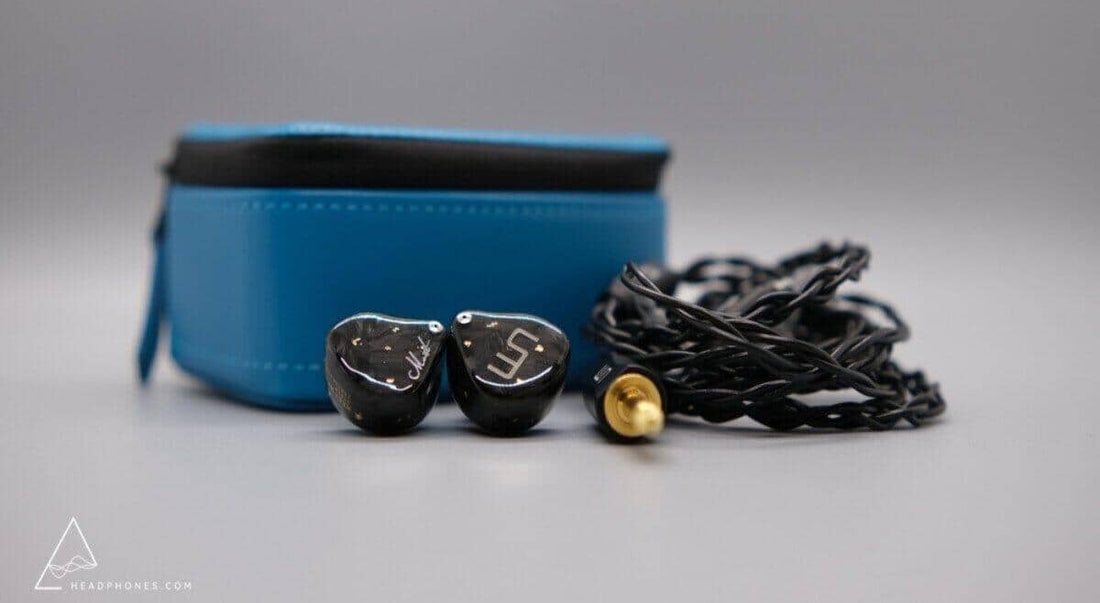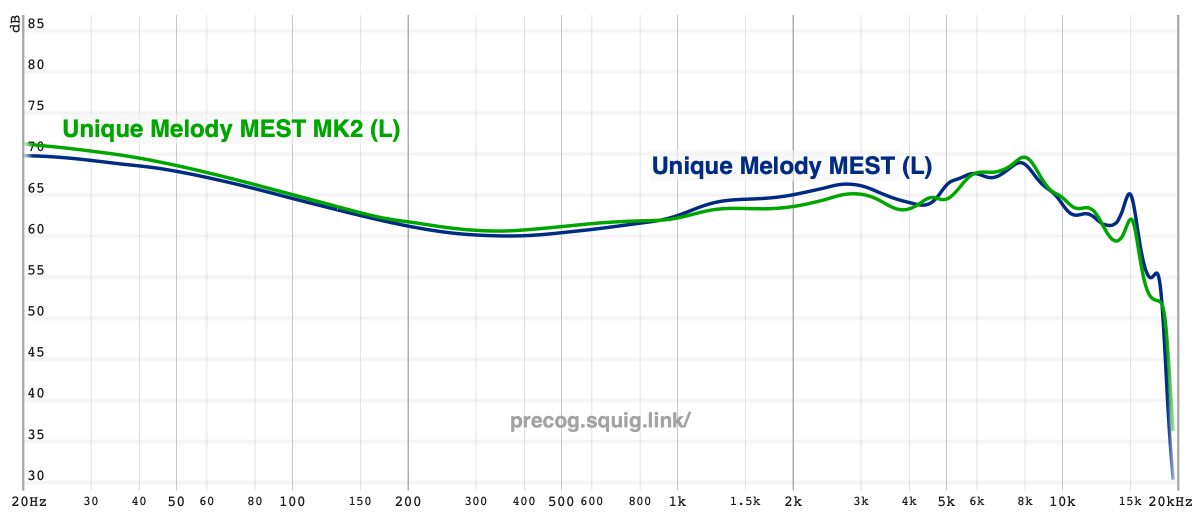Unique Melody MEST MKII Review - Still great, but....

Introduction
The Unique Melody MEST was one of last year's most hyped IEMs. From its excellent resolution to its out-of-head imaging, it impressed even me. That's no easy feat, mind you. But 2021 is a new year, and hot off the success of the original MEST, Unique Melody has already opted to release a successor, the MEST MKII ($1500). This is always a tricky thing to approach in the IEM world. After all, how does a brand improve on an already good IEM? Well, it turns out that more often than not...they don't. Most "Pro","MKII", and "X" models of IEMs I've heard just don't seem to get much further (or even stack up with) their predecessors. That in mind, I approached the MEST MKII cautiously and with one burning question in mind: Is it actually better than the original MEST?
The MEST MKII was provided on loan for review courtesy of Antdroid (AudioDiscourse). The MEST was provided on loan for review courtesy of TylersEcelectic (YouTube). Thank you! As usual, what follows are my honest thoughts and opinions to the best of my ability.
Source and Drivability
All critical listening was done off of my iBasso DX300 and iPhone X using lossless FLAC files. SpinFit ear tips and the included Azla Xelastec ear tips were used. The MEST IEMs are relatively easy to drive, and you should have no trouble driving them off of portable sources. These are pretty interesting IEMs in that they use a quadbrid driver (the engine of an IEM so to speak) setup. You have all of DD/BA/BC/EST driver types crammed into one IEM.
The Tangibles
The MEST MKII arrives in a black cardboard box with two slots: one for the IEMs and the case on top, and another for the accessories on bottom. Those accessories include the following:
- Custom Dignis Arca Case
- Azla Xelastics ss/ms/m
- Comply Foam tips s/m/l
- Silicone tips s/m/l
- Microfiber cloth and placard
- PW Audio 2-pin 0.78mm Cable (terminated in 2.5/3.5/4.4mm depending on the option you choose)

As usual, I'm not indexing too hard for accessories and presentation, but I do think this is a pretty nifty package - you should have everything you need. The new cable is also a small step up over the original MEST's cable which I felt was basically unusable. That's clearly not a high bar, but it's an improvement nonetheless!
Moving to the MEST MKII itself, it's sporting a more matte version of the carbon fiber faceplate that inspired the original, this time with gold flakes interspersed throughout. I dig this look. The main physical difference between the MEST MKII and the original MEST, though, is the size. The original MEST was a larger IEM, and Unique Melody has managed to shrink the MEST MKII down into a more lithe form factor that should better suite more ears. Personally, I had no fit issues with the original, so the MEST MKII's fit also works great for me. A more subtle change here is the use of flush, 2-pin connectors instead of the qdc-style ones that the original MEST used. I'd say I'm pretty happy with these changes overall.

Pictured to the left is the MEST MKII; pictured to the right is the original MEST.
Sound Analysis
Twitter summary: The MEST MKII doesn't stray far from its predecessor, opting for a slightly warmer, thicker interpretation of the original MEST's sound profile. It sports an emphasized but controlled bass shelf, moderate pinna compensation, and a generally smooth, present treble response.

The measurement above was taken off of an IEC-711 coupler. There is a resonance peak at ~8kHz; as such, measurements after this point should not be considered entirely accurate.
Bass
The MEST MKII sports a hair more bass presence than its predecessor. From the perspective of tonality, I find this agreeable, but intangibly, I wasn't a fan of the original MEST's bass. Some readers will recall that I wrote it was “lacking in transient density - that characteristic richness - which I would attribute to the best bass responses (...) these limitations are most evident on deep, heavy drops”. Unfortunately, the MEST MKII is not an improvement in this department, and I stand by my original comments following the agreement of trusted ears.
Now, the swing of the MEST MKII’s bass is not bad, and it sounds fairly fluid for scaling gradations in bass volume - so sure, it’s dynamic. But it really does not slam as hard as it should. Take for example Wooli’s series of drops at 2:23 on Seven Lions, Trivecta, and Wooli’s “Island”. The MEST MKII's woofer is competent at distinguishing between the dirty, dark bass hits, but the depth with which it pushes into the drops is lacking. It sounds like it sinks halfway into a drop, and then shoots back up far too quickly for the next drop in the series. The general tactility of the bass itself also leans toward the drier side, thus lending to awkward juxtaposition with its actually decent dynamic range. It throws me off, and in my opinion only, there are BA IEMs with better bass than the MEST MKII.
Midrange
The original MEST sported a leaner midrange with a boost to the presence regions at around 3-4kHz which brought female vocals to the forefront. As a result, it had excellent macro-detail and resolution at the expense of a not-so-natural (perhaps digital or upwards-compressed is a more apt descriptor) sounding midrange presentation.
By comparison, the midrange of the MEST MKII is thicker and more subdued than its predecessor. Most noticeably, the oh-so-sharp transient attack that the original MEST exhibited has been blunted some. A more subtle, positive consequence is that midrange attack matches the bass response more closely and coherency - one of my major gripes with the original MEST - has seen an improvement here. I also feel that some of the MEST’s clean decay has been eschewed for more grit, which may lend to a more natural presentation for some listeners. But on the other hand, midrange resolution is simply not as good on the MEST MKII for obvious reasons. Overall, I’d say I’m pretty agnostic on these changes to the midrange.
Treble
We see a similar trend in the treble region. The original MEST was a more forward listen that demanded attention with its treble response. Personally, I felt that it was surprisingly sharp for an EST implementation - not necessarily a bad thing, mind you - but that, again, it had timbral inconsistencies which made it somewhat jarring to hear. The MEST MKII lowers the 6kHz peak of the original, so percussive hits come across less defined, if not a tad thicker and heavier. This also fixes some of the tinny characteristic that the original MEST exhibited in the treble. Other than that, extension remains equidistant between the MESTs. I still find both to sound a tad compressed, but pretty alright overall. Spoiler alert: Out of all the changes to the MEST? This is the one that I feel is genuinely a step forward.

Technical Performance
Technicalities on the MEST MKII are solid (even excellent in the grand scheme of things), but they do not match the original for a sense of “wow” factor. This is most apparent on the font of imaging. On first listen, I found the MEST MKII to have fairly good positioning of instruments; however, the sense of space between them - separation - sounded more congested than from my memory of the MEST. Further A/B-ing was required, so I turned to my usual test track Sawano Hiroyuki’s “Cage” which quickly confirmed my suspicions. When the cymbals drop at 0:10, they decay biased slightly towards the left. On the MEST MKII, it sounds like these frequencies run into a pseudo “wall” and they mesh into the triangles being played in the backdrop. By comparison, the original MEST seems to have the triangles positioned slightly higher and wrapped around my head more, thus circumventing this collision. If you’re asking me, the MEST MKII still has good imaging, but it’s a long way off holographic now.
There are other small discrepancies between the two IEMs. As I alluded to earlier, the midrange and treble response of the MEST MK2 lean softer than its predecessor. The MEST walks away with the edge (metaphorically and sonically) in terms of clarity between the two IEMs. As for improvements, the MEST MKII generally touches up on the coherency issues I criticized the original MEST for. It does so by virtue of a more natural, consistent timbre from the midrange and up. Whether that's because of the new, full-range bone conduction driver, I honestly couldn't tell you because I still don't hear it.

The Verdict
Let's go back to the whole "is the MEST MKII actually better than the MEST?" thing. If it’s not already apparent, the MEST MKII isn’t really an upgrade to my ears. It’s much more closely a side-grade. Listeners who desire a smoother, more natural listen should go for the MEST MKII, while listeners looking for more special sauce would be better suited with the original MEST. As far as my preferences go, though, the MEST MKII puts me in the tricky position of “I prefer the tonality of this more, but the technicalities clearly aren’t as good, so I don’t love this as much as I should”. This is still a good IEM; scratch that, this is still a great IEM. But anyone can say something is good, great, or whatever they want, really, without context. I'm not in the business of doing that. Stack on a $500 price differential (at the time of this publication, $1000 for the MEST vs. $1500 for the MEST MKII) between the two models, and I think you know which one I'm inclined to recommend.
Reference Tracks
- Aimer - Hakuchuumu
- David Nail - Let It Rain
- Everglow - DUN DUN
- Girls’ Generation - Galaxy Supernova
- Illenium - Broken Ones
- Joe Nichols - Sunny and 75
- Keith Urban - Defying Gravity (2009)
- Keiichi Okabe - Weight of the World (NieR:Automata Original Soundtrack)
- Sabai - Million Days
- Sawano Hiroyuki - Best of Vocal Works Remastered (2020)
- Taeyeon - My Voice (2017)
- Tiffany - I Just Wanna Dance
---
Discuss the Unique Melody MEST MKII on the HEADPHONE Community Forum.
---
